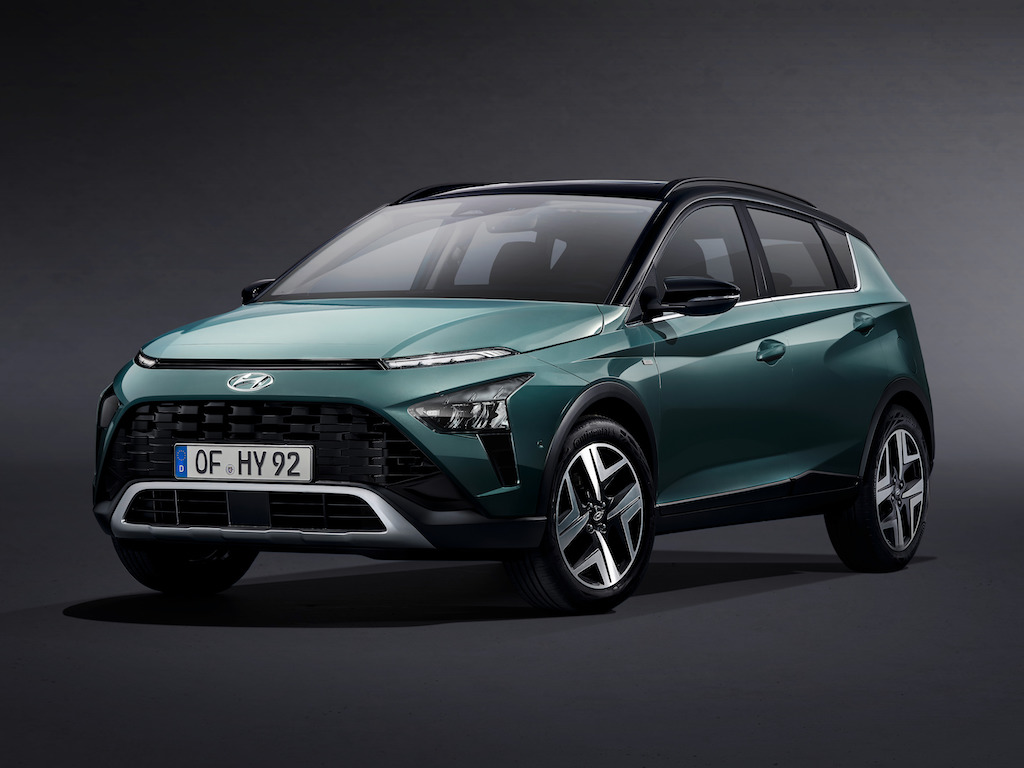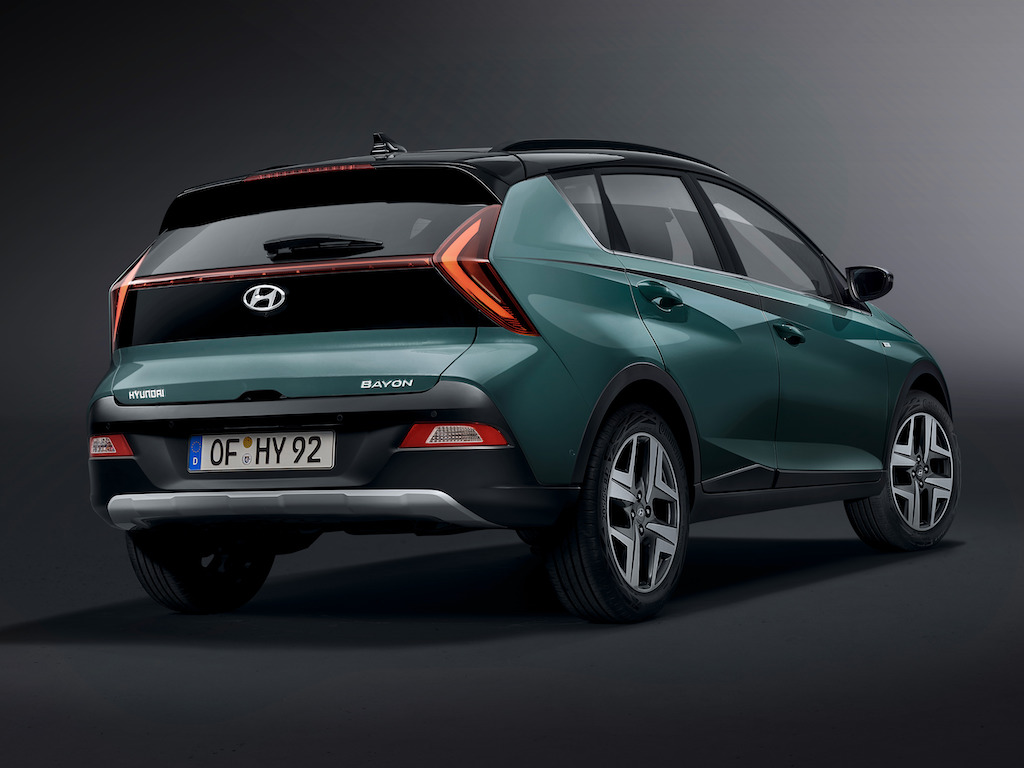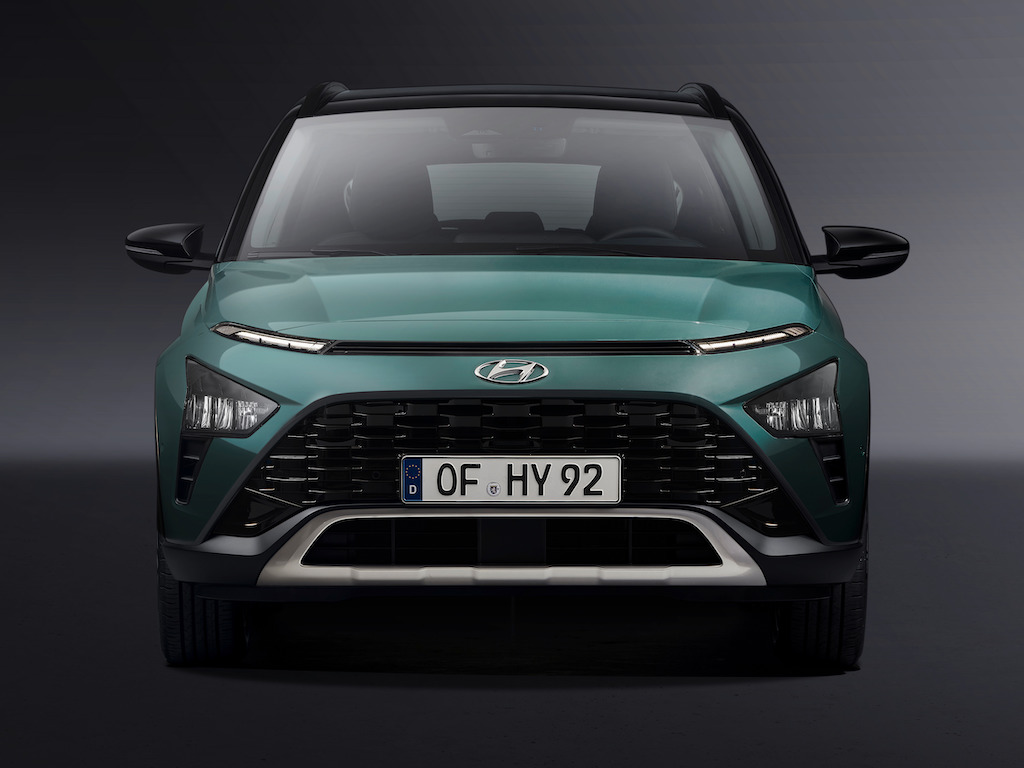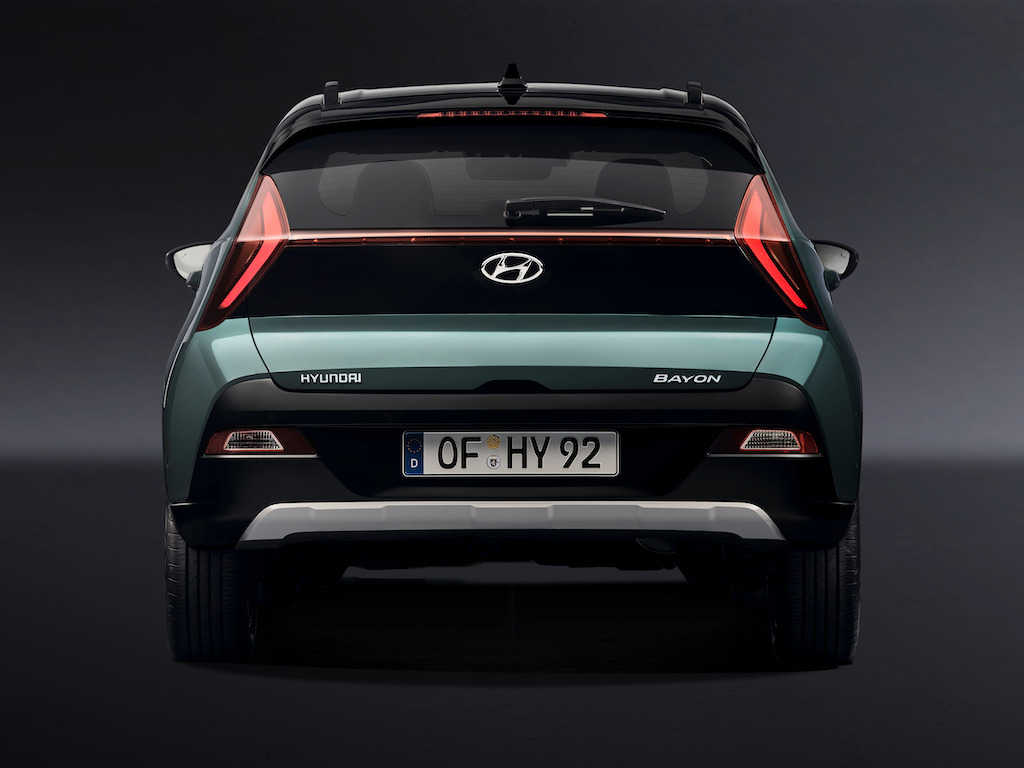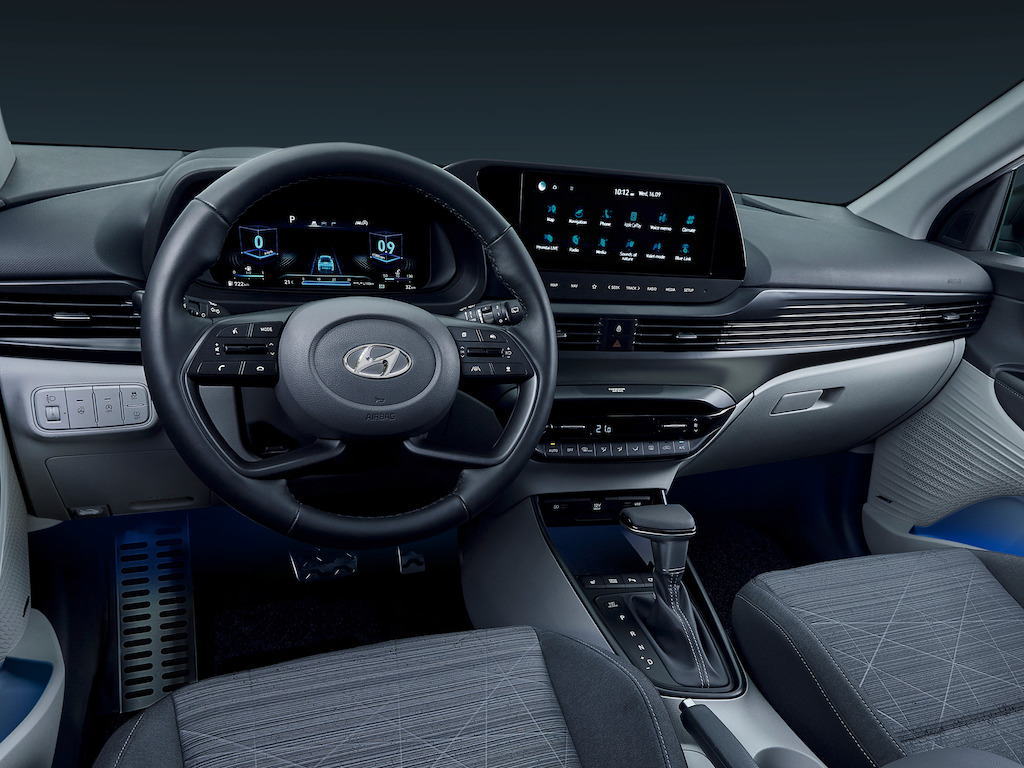Hyundai reveals Bayon entry-level SUV
Hyundai has taken the wraps off its Bayon crossover, which joins later this year as the entry-level model in its SUV line-up.
The new model, revealed in teaser form late-2020, will sit under the Kona, Tucson, Nexo and Santa Fe in the line-up, bringing a rival to the Nissan Juke.
It’s focused on offering a compact exterior and roomy interior, as well as a range of advanced safety and connectivity features.
As per the brand’s existing naming strategy, the name is based on a city; in this case Bayonne in the south west of France, reflecting the model’s target European audience.
The Bayon shares its underpinnings with the i20 supermini and is positioned as striking “a perfect balance between compactness and convenience”, including good driver and passenger legroom and boot space of 411 litres, rising to 1,205 litres with the rear seats folded. It also provides ground clearance of up to 183mm while design features such as a lower skid plate reinforce its SUV identity.
Engine line-up, depending on market, includes a 1.0-litre T-GDi petrol 48V mild hybrid with either 100hp or 120hp and with Hyundai’s new six-speed intelligent manual transmission (iMT) or seven-speed dual-clutch automatic.
The iMT brings enhanced fuel savings and efficiency by disengaging the engine from the transmission when the driver releases the accelerator, allowing the vehicle to start coasting.
Fuel economy is yet to be announced but emissions start from 118g/km for the 100hp mild hybrid and 119g/km for 120hp unit, both with the iMT.
The Bayon is also the first Hyundai SUV to feature its rev-matching feature usually reserved for the brand’s high-performance models, such as the i30N, and giving smoother or sportier downshifts for the manual transmission when in Sport mode.
Connectivity and technology is said to be class-leading and includes a 10.25-inch driver’s display panel and either a 10.25-inch or 8-inch screen for infotainment, the latter available with wireless Apple CarPlay and Android Auto.
The Bayon is also equipped with the latest version of Hyundai’s Bluelink connected services, including features such as connected routing and a new user profile feature, and the ability to locate, lock and unlock the car remotely using the Bluelink app, or check vehicle information such as required maintenance or fuel levels.
Driver assistance features include lane following assist and forward collision avoidance assist along with driver attention warning, which can detect drowsy or distracted driving and works in tandem with leading vehicle departure alert, which alerts the driver when the vehicle ahead of them starts moving forward and they do not react quickly enough.
Prices will be announced closer to the Bayon’s arrival later this year.

